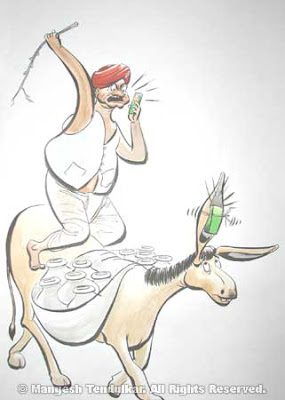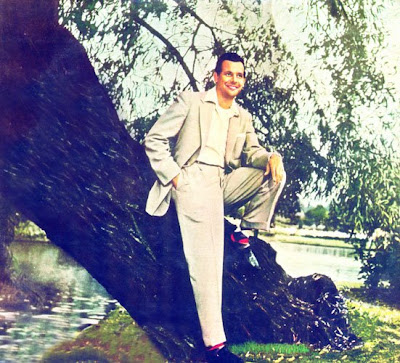Stretch of imagination

Mathures Paul meets cartoonist Mangesh Tendulkar
Proud of his creations, Mangesh Tendulkar walks around Tilak Hall in Maharastra Nivas explaining to visitors the power of cartoons. An opposite of his renowned playwright brother Vijay Tendulkar, 70-year-old Mangesh is in town to host his first exhibition. You have read much about Anant Pai and RK Laxman. Their contribution to Indian comics and cartoons is immense. But that of Tendulkar is equally important.
He is a master in the art of single frames. He doesn’t enjoy the advantage of white space that exists between panels in a comic book. Much can happen between frames — Superman might die, Hagar give up drinking and Charlie Brown win a baseball match. Tendulkar has to tell his story with a single picture and that too without a bubble. “Words make the frame weak. To tell a story without words is difficult,” says the cartoonist.
The last time he was in Kolkata was in 1976-77. “Kolkata has allowed me to enjoy great music, poetry, film and theatre. I am not saying this to befriend critics. When I draw, I listen to Bengali music. Sadly, I don't know the language. I am 70 and this is possibly the last time I am visiting Kolkata. It’s a dream come true and my life is complete.” He remembers his earlier visits well. “I used to visit Ichapur frequently. And I used to take a late night train back to Kolkata. What amused me, and still does, was the security people enjoyed. Women used to travel by train without worry.”
Tendulkar’s cartoons bespeak contemporary issues through drawings anybody can relate to. Sometime back he drew the cartoon of a naked man hiding his modesty with an Indian monetary note to depict the declining rate of interest in small saving schemes. Yet, the picture remains true to life. The same can be said about a sequence in which Earth is churned in a food processor until the human population overflowed the jar. “Political cartoons are created by politicians. Our job is to accentuate. I am interested in the human mind, which creates problems and solves them,” adds Tendulkar.
It was after reading Lawrence Lariar’s Cartooning For Everybody Tendulkar took up cartooning. His elder brother too wanted to be a cartoonist “but ended up a playwright. In 1995 I declared that I had completed my responsibilities towards the family and I wanted to live a life of my own. I still work for at least eight hours a day,” says the admirer of Shankar Pillai and RK Laxman cartoons.
He believes cartoons is a violent medium. “One has to use the art form with care. There is a great possibility of destruction.” Unlike most cartoonists who draw freely from mythology, Tendulkar is interested in bridging the urban-rural divide. “We believe in myths. We believe in democracy. Had democracy existed in mythological times, the Kauravas would have had two-third majority! We are living in a confused world."
Recently there has been a trend of using computer technology in the colouring stage. “Computers are becoming essential. But a beginner should always make hand-drawn cartoons. When my generation began cartooning, a single mistake in the frame made sure that the sheet of paper ended up in a dustbin. This way you master the trade.”
Cartoonists are enjoying less space in Indian newspapers, which are mostly into international syndicated strips. “When I was young, a square centimetre was cheap. Nowadays Indian cartoonists enjoy less space and are looking to art galleries. The situation in America is becoming increasingly similar,” continues Tendulkar, whose first work was published around 1954.
A force behind his illustrious career is his wife. “She is not into cartooning and is a very serious person. She has passed an ordinance against using her in cartoons!” rounds off Tendulkar munching a sandwich and sipping coffee served by his affable wife.
Mangesh Tendulkar is among the first generation cartoonists in India. Today we speak of the great Indian animation. He is all praise for it. But isn’t it time we got down to serious indigenous content and stop speaking about outsourcing and 2D animations?


Comments